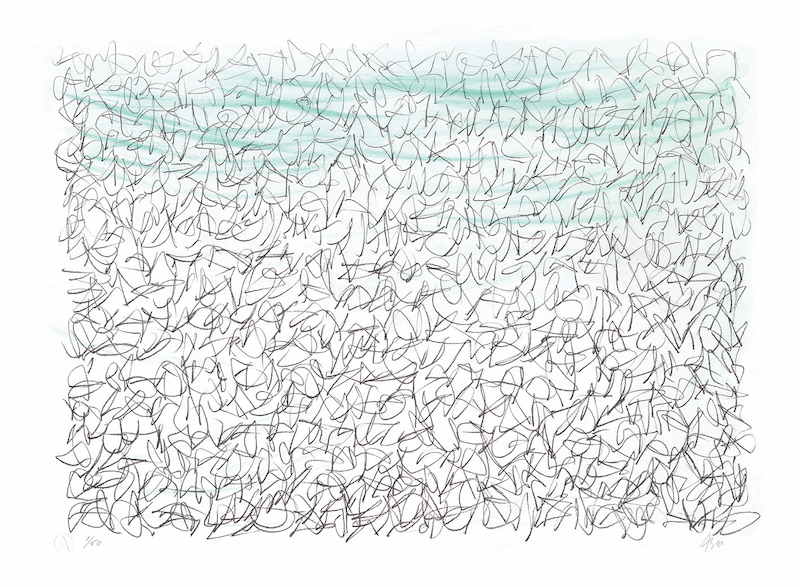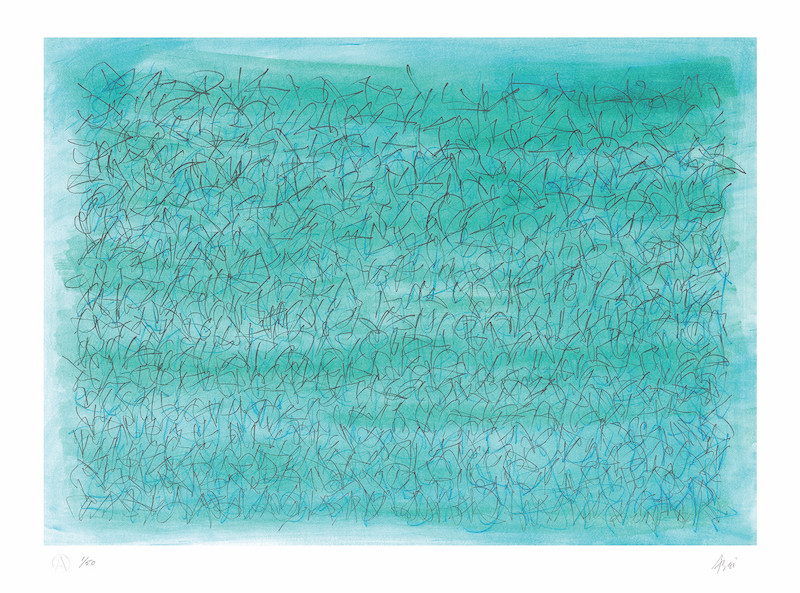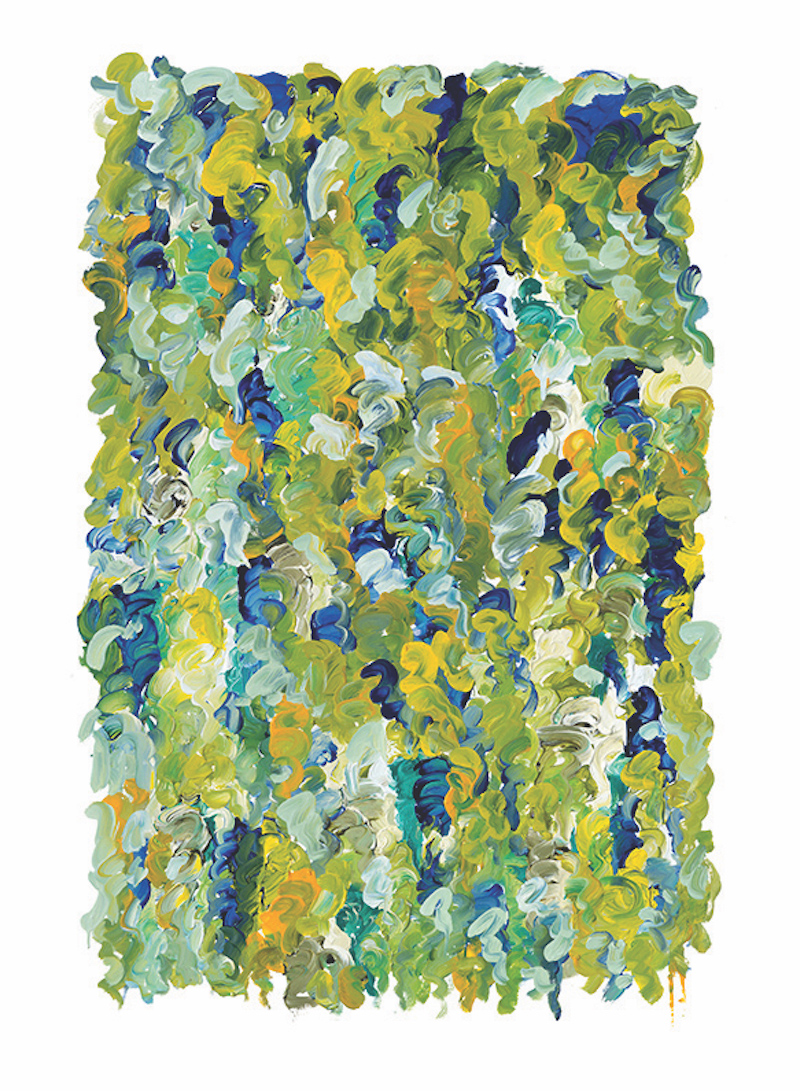While executed in paint and pencil, the true medium of Brisbane-based artist Pamela Asai’s work is performance. Standing in front of her surface, the artist embraces the pattern of movement and articulation of gesture, translating the bodily into physical form. “My interest is in the mark at the moment of creation,” she says. “The final work is thus a memory of the experience of its making.”
Asai sees herself within the tradition of abstract expressionism, which includes artists such as Jackson Pollock, Joan Mitchell, Lee Krasner and Cy Twombly, creating a visual language through the act of spontaneous creativity. “Patterns appear as boundless, repetitive movements or gestural marks that fill an entire surface, just as waves fill an ocean.”
Some of her works take inspiration from life, such as her series on grasses or those that appear to mimic the action of handwriting. Mostly, though, they come from within. Her works are bodily patterns, connected with the rhythm of the breath and the heartbeat. The patterns in Asai’s practice are those of the artist, enacted by gesture: “With gesture, I can do anything. I am free.”
Above: Pamela Asai, Colours in the Landscape, 2023. Oil on paper, 61 x 86 cm. Courtesy: the artist.

Pamela Asai, Abstract 1-22, 2022. Oil, coloured pencil and graphite on paper, 86 x 61 cm. Courtesy: the artist.

Pamela Asai, Abstract 2-22, 2022. Oil and graphite on paper, 86 x 61 cm. Courtesy: the artist.

